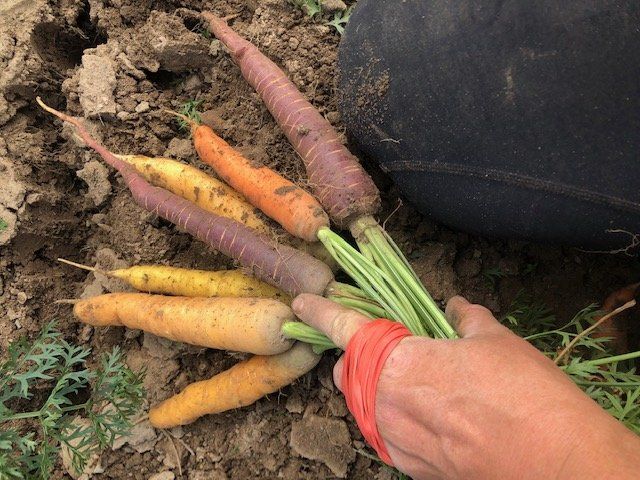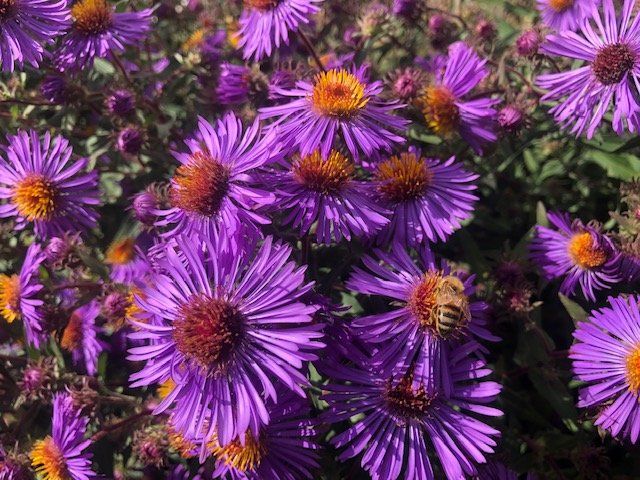This week felt like a quick dash into fall as it was all cold, overcast, and drizzly, thank goodness the sunshine found it's way to us today. I'm choosing to believe we'll have many more days like this before the first flakes hit.
This is the first week we will be offering our famous baby ginger, and in light of that I thought I would give some details on how we grow this delightful, but tricky crop.
It all starts with organic tissue cultured seed from Hawaii. Ginger is infamous for viral disease and so disease free seed is imperative. It's also in high demand so we have to place our orders the first week of November for the following year.
Once it arrives in late February or early March we cut it (they can only sell ginger into Canada as "whole hand", for eating, not for seed), then we let the cut surfaces cure. Once cured we plant it into trays and place it on heat mats to sprout. It sprouts for three whole months before we can plant it out into a tunnel, in early June when the soil has sufficiently warmed.
Once planted we irrigate weekly, cultivate every week or two for weeds, and after about 6 weeks we fertilize and hill it (bury it under more soil). We keep irrigating, cultivating, and maybe hill and fertilize once more before we can begin to harvest in the early fall.
It's a lot of work, and expense, but baby ginger is so lovely. The skin is thin, and the flesh lacks the fibrousness of it's grocery store counterpart. You can also use the leaves to infuse broths and curries with ginger flavor.
Since baby ginger does not store well, and cannot handle frost, it's a fleeting fall treat, however, it can be frozen for all of your wintertime needs. This is our inaugural harvest, however, in a few more weeks, once the ginger has had a chance to size up sufficiently we will be offering bulk quantities for freezing. Keep your eyes open:)
That's all for now, happy eating until next time.
Tamara



